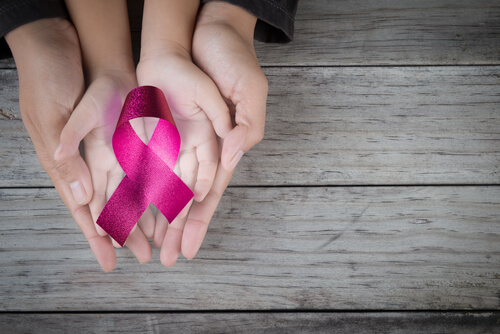Leukemia in Children: What Is It and How to Face It


Written and verified by the doctor Nelton Ramos
Leukemia is the most common childhood cancer. It cannot be prevented, however, we can tell you everything you need to know about leukemia in children and how best to cope with it.
If you are reading this, you may have a suspicion or confirmation that your child is suffering from leukemia. It’s scary, we know. However, we’d like to offer you some more information on the disease.
Leukemia has a high cure rate. Although medical treatment is very important, you can also provide support to your child in other ways.
What is leukemia?
Leukemia is a type of cancer that affects blood cells, in most cases white blood cells. It is caused by a transformation that occurs in the cells, before they become white blood cells. This transformation makes them cancerous, which means they reproduce constantly.
Leukemia can infiltrate the bone marrow and interfere with the production of normal blood cells. This could reduce the concentration of platelets and red blood cells which in turn leads to anemia and an increased risk of suffering from infections.
In addition, cancer cells can travel through the bloodstream and enter other organs such as the liver, spleen, kidneys and brain.

Causes of leukemia in children
What causes this disease? Are there factors that predispose a person to suffer from it?
- Among the genetic factors, it is known that certain disorders such as Down syndrome and Fanconi syndrome are directly related to an increased probability of suffering from this disease.
- Environmental factors such as exposure to high levels of radiation can also directly influence cell mutation. There are also some chemicals and drugs that can increase a child’s risk of suffering from this disease.
- Finally, a weakened immune system can also favor cell mutation.
Trust in your children’s strength, you’ll be surprised by what they’re able to overcome.
How is leukemia detected in children?
There are many tests that can be performed in order to confirm the presence of leukemia. Here are a few examples:
- Blood tests. A complete blood cell count can help detect leukemia in children.
- Bone marrow tests.
- Lumbar punctures.
- Biopsies of lymph node glands.
The tests mentioned above can help detect the presence of leukemia. Keep in mind that a positive result from any one of these tests doesn’t confirm that your child has leukemia. These tests are also used to detect different pathologies.
From the moment that a specialist makes a confirmed diagnosis, the fight against the disease begins. Although it is cancer, it can be overcome. Depending on the child’s age, the survival rate can reach up to 85%.
It all depends on the moment when the diagnosis is made and the effectiveness of the treatment applied.

Advice for parents
This disease can wreak havoc on parents who see how their children suffer to fight a terrible disease. If this is your case, we’d like to provide support for you through the following guidelines:
- Trust in your child. The fact that he’s young doesn’t mean he’s weak. Your little one’s strength can be surprising. Trust in his potential and remind him that he’s stronger than he can imagine.
- Don’t repress your feelings and emotions. During the process you may break down and you have the right to do so. Find spaces and people with whom you can express your fears. You’ll feel a lot better after expressing yourself.
- Don’t lie to your child. You can adapt your answers in a way to make it understandable for him, however don’t lie to him. He deserves to know the truth and to ask all of the questions he needs to.
- Help your child by listening. Your child also needs to know that he can express his feelings and fears to you. If your child thinks he’s hurting you by telling you how he feels, then he’ll hide his feelings from you. You can provide a space for him to express everything he feels.
- Try to maintain your child’s routine to the extent possible. Try to avoid making the disease take over your child’s life. It is part of his life story but it is not everything. Encourage your child to study and to continue doing activities he enjoys.
- Friends, family and social life. He should be able to feel the support from the people who surround him. Allow his friends and family to show their support.
It is true that leukemia will mean a change in lifestyle for your child and your family. However, as a parent, you can try to focus on the positive. Keep in mind that making your child happy is your main mission.
Leukemia is the most common childhood cancer. It cannot be prevented, however, we can tell you everything you need to know about leukemia in children and how best to cope with it.
If you are reading this, you may have a suspicion or confirmation that your child is suffering from leukemia. It’s scary, we know. However, we’d like to offer you some more information on the disease.
Leukemia has a high cure rate. Although medical treatment is very important, you can also provide support to your child in other ways.
What is leukemia?
Leukemia is a type of cancer that affects blood cells, in most cases white blood cells. It is caused by a transformation that occurs in the cells, before they become white blood cells. This transformation makes them cancerous, which means they reproduce constantly.
Leukemia can infiltrate the bone marrow and interfere with the production of normal blood cells. This could reduce the concentration of platelets and red blood cells which in turn leads to anemia and an increased risk of suffering from infections.
In addition, cancer cells can travel through the bloodstream and enter other organs such as the liver, spleen, kidneys and brain.

Causes of leukemia in children
What causes this disease? Are there factors that predispose a person to suffer from it?
- Among the genetic factors, it is known that certain disorders such as Down syndrome and Fanconi syndrome are directly related to an increased probability of suffering from this disease.
- Environmental factors such as exposure to high levels of radiation can also directly influence cell mutation. There are also some chemicals and drugs that can increase a child’s risk of suffering from this disease.
- Finally, a weakened immune system can also favor cell mutation.
Trust in your children’s strength, you’ll be surprised by what they’re able to overcome.
How is leukemia detected in children?
There are many tests that can be performed in order to confirm the presence of leukemia. Here are a few examples:
- Blood tests. A complete blood cell count can help detect leukemia in children.
- Bone marrow tests.
- Lumbar punctures.
- Biopsies of lymph node glands.
The tests mentioned above can help detect the presence of leukemia. Keep in mind that a positive result from any one of these tests doesn’t confirm that your child has leukemia. These tests are also used to detect different pathologies.
From the moment that a specialist makes a confirmed diagnosis, the fight against the disease begins. Although it is cancer, it can be overcome. Depending on the child’s age, the survival rate can reach up to 85%.
It all depends on the moment when the diagnosis is made and the effectiveness of the treatment applied.

Advice for parents
This disease can wreak havoc on parents who see how their children suffer to fight a terrible disease. If this is your case, we’d like to provide support for you through the following guidelines:
- Trust in your child. The fact that he’s young doesn’t mean he’s weak. Your little one’s strength can be surprising. Trust in his potential and remind him that he’s stronger than he can imagine.
- Don’t repress your feelings and emotions. During the process you may break down and you have the right to do so. Find spaces and people with whom you can express your fears. You’ll feel a lot better after expressing yourself.
- Don’t lie to your child. You can adapt your answers in a way to make it understandable for him, however don’t lie to him. He deserves to know the truth and to ask all of the questions he needs to.
- Help your child by listening. Your child also needs to know that he can express his feelings and fears to you. If your child thinks he’s hurting you by telling you how he feels, then he’ll hide his feelings from you. You can provide a space for him to express everything he feels.
- Try to maintain your child’s routine to the extent possible. Try to avoid making the disease take over your child’s life. It is part of his life story but it is not everything. Encourage your child to study and to continue doing activities he enjoys.
- Friends, family and social life. He should be able to feel the support from the people who surround him. Allow his friends and family to show their support.
It is true that leukemia will mean a change in lifestyle for your child and your family. However, as a parent, you can try to focus on the positive. Keep in mind that making your child happy is your main mission.
All cited sources were thoroughly reviewed by our team to ensure their quality, reliability, currency, and validity. The bibliography of this article was considered reliable and of academic or scientific accuracy.
- Signos y síntomas de la leucemia en niños. American Cancer Society. 2019. [En línea].
- Lassaletta, A. Leucemias. Leucemia linfoblástica aguda. Pediatr Integral 2012; XVI(6): 453-462. [En línea].
- J. Ferrís i Tortajada y cols. Factores de riesgo para las leucemias agudas infantiles. An Esp Pediatr 1999;50:439-446.
This text is provided for informational purposes only and does not replace consultation with a professional. If in doubt, consult your specialist.








